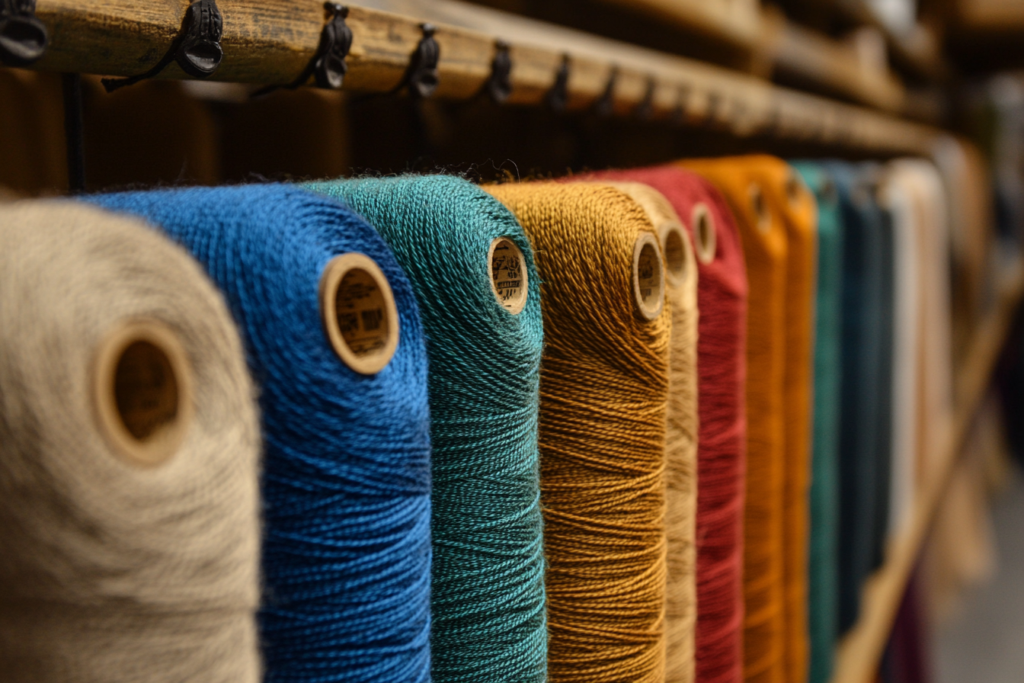Textile Fiber Products Identification Act (TFPIA): Understanding the Key Labeling Requirements
Meta Description: The Textile Fiber Products Identification Act (TFPIA) mandates that all clothing products sold in the U.S. must be labeled with fiber content, manufacturer or importer, and country of origin. Learn about these key requirements and their role in the garment industry.
What is the Textile Fiber Products Identification Act (TFPIA)?
The Textile Fiber Products Identification Act (TFPIA) is a U.S. federal law that mandates labeling requirements for textile products. This act ensures that consumers are informed about the fiber content, the manufacturer or importer, and the country of origin of textile products, including clothing, accessories, and home textiles.
Enforced by the Federal Trade Commission (FTC), the TFPIA aims to protect consumers from misleading or false labeling and to ensure that textile products meet certain standards. The law is crucial in the global textile trade, providing transparency and fostering fair competition by requiring clear and accurate labeling of fabric products sold in the U.S.


Key Requirements of the TFPIA
1. Fiber Content
- The TFPIA mandates that the fiber content of a textile product must be listed on the label. This includes specifying the percentage of each fiber used in the fabric. For example, if a shirt is made of 80% cotton and 20% polyester, this must be clearly stated.
- Why It Matters: Fiber content labeling helps consumers make informed purchasing decisions, especially for those with allergies or sensitivities to certain fibers (e.g., wool, latex).
2. Manufacturer or Importer
- The label must also include the name or registered identification number of the manufacturer, importer, or distributor of the textile product.
- Why It Matters: This helps consumers and regulatory bodies trace the product back to its origin, which is important for accountability and recalls in case of defects or safety issues.
3. Country of Origin
- The country where the product was manufactured or assembled must also be indicated. The TFPIA requires the use of the “Made in” statement (e.g., Made in the USA, Made in China) to disclose the country of origin.
- Why It Matters: Knowing the country of origin provides valuable information about the production standards, working conditions, and quality control associated with a particular country. It also helps ensure that imported products comply with U.S. import regulations.
Why is the TFPIA Important?
1. Consumer Protection
- The TFPIA ensures that consumers are not misled about the fiber content and quality of the textile products they purchase. This labeling requirement prevents deceptive marketing practices and guarantees that consumers can make informed decisions when buying clothing and home textiles.
2. Quality Assurance
- The act helps ensure that textile products meet minimum standards of quality and labeling transparency. The proper identification of fiber content, manufacturer, and origin allows consumers to assess the product’s quality, durability, and care requirements.
3. Fair Competition
- By standardizing the labeling requirements, the TFPIA helps maintain fair competition in the textile industry. All companies, whether domestic or foreign, must comply with the same rules, ensuring that no one company gains an unfair advantage by making misleading claims about their products.
4. Regulatory Compliance
- Compliance with the TFPIA ensures that textile products meet U.S. regulations for consumer protection. Manufacturers and importers are required to maintain accurate records, which can be inspected by the FTC or other regulatory bodies if necessary.
5. Global Trade Transparency
- The country of origin requirement is essential for transparency in global trade. It allows the U.S. government to monitor the flow of textile products into the country and track any patterns that may affect trade policies, labor conditions, or environmental standards.
How to Label Under the TFPIA
📌 Step 1: Determine the Fiber Content
- Identify the fiber composition of the fabric. For example, if a garment is made of 60% cotton, 30% polyester, and 10% spandex, this needs to be clearly stated on the label.
📌 Step 2: Identify the Manufacturer or Importer
- Include the name of the manufacturer, importer, or distributor of the product. The name should be spelled out clearly, and the registered identification number can also be used if applicable.
📌 Step 3: Specify the Country of Origin
- The garment’s country of origin must be labeled according to where the product was produced. This could be “Made in the USA”, “Made in India”, or other appropriate country labels.
📌 Step 4: Follow the FTC Guidelines
- Ensure that the information is clearly visible, legible, and placed in a location that is easy for the consumer to see, such as on the neck tag or side seam of the garment. Labels must be durable enough to withstand typical wear.
Example of TFPIA-Compliant Label
Here is an example of a properly labeled clothing item under the TFPIA:
| Item | Label Description |
|---|---|
| Fiber Content | 70% Cotton, 30% Polyester |
| Manufacturer/Importer | XYZ Apparel, Inc. (12345) |
| Country of Origin | Made in Vietnam |
Illustration of a TFPIA-Compliant Label
Here’s an illustration of how a TFPIA-compliant label should appear on a garment:

Penalties for Non-Compliance
Failure to comply with the Textile Fiber Products Identification Act can result in penalties, including:
- Fines: Companies may face financial penalties for not providing accurate labeling information.
- Product Seizure: Garments that do not meet labeling requirements can be seized by U.S. Customs and Border Protection (CBP).
- Legal Action: Repeat offenders may face legal action from the Federal Trade Commission (FTC) or other regulatory bodies.
Conclusion: The Significance of TFPIA Compliance
The Textile Fiber Products Identification Act (TFPIA) is a vital regulation that ensures consumer transparency and promotes fair trade within the U.S. textile industry. By requiring accurate labeling of fiber content, manufacturer or importer, and country of origin, the TFPIA provides consumers with essential information about the clothing products they purchase.
Compliance with the TFPIA not only protects consumers but also ensures that manufacturers and importers meet the legal standards required to maintain high levels of trust, quality, and accountability in the textile industry.



